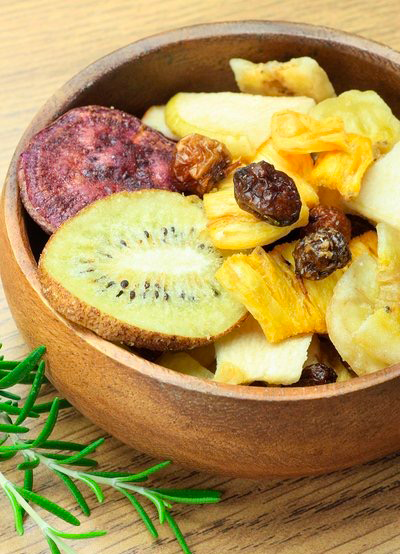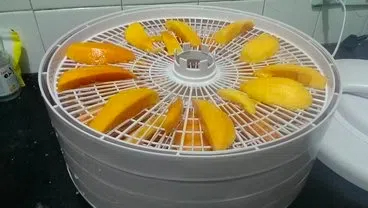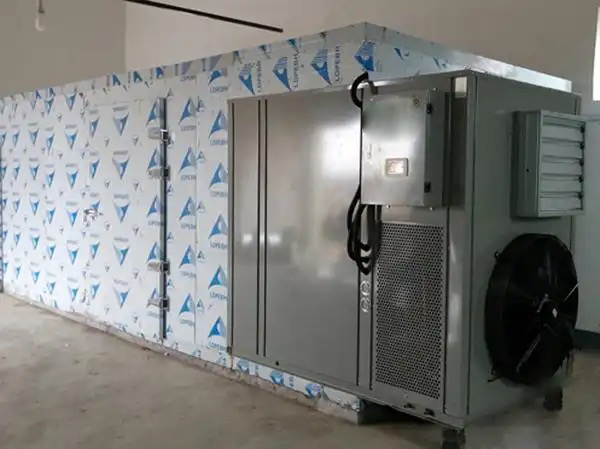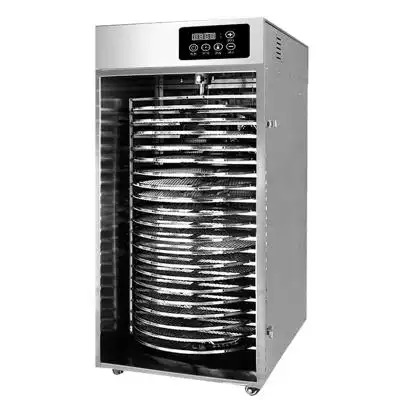
Content Menu
● Introduction
● The Evolution of Food Dryers
>> What is a Heat Pump Dryer?
● Benefits of Using a Heat Pump Dryer for Food
>> Heat Pump Dryer in Action
● Choosing the Right Heat Pump Dryer
>> Maintenance Tips for Heat Pump Dryers
● The Working Mechanism of Heat Pump Dryers
>> How Temperature Affects Drying
● Applications of Heat Pump Dryers
>> Innovative Uses of Heat Pump Dryers
● Common Misconceptions About Heat Pump Dryers
● Conclusion
● Frequently Asked Questions (FAQs)
>> 1. What Is the Best Heat Pump Dryer for Home Use?
>> 2. How Much Energy Does a Heat Pump Dryer Use?
>> 3. Can I Use a Heat Pump Dryer for All Types of Food?
>> 4. How Long Does It Take to Dry Food with a Heat Pump Dryer?
>> 5. Do I Need Special Ventilation for a Heat Pump Dryer?
Introduction
In today's world, where sustainability and energy efficiency are paramount, food preservation methods have evolved significantly. One of the most effective technologies for food dehydration is the heat pump dryer. This article will delve into the workings of heat pump dryers, their benefits, and how to choose the best one for your food drying needs.

The Evolution of Food Dryers
Historically, food preservation relied on methods such as sun drying or high-temperature drying, which often compromised the quality and nutritional value of food. Heat pump dryers have revolutionized this process by using low temperatures to effectively remove moisture while preserving the food's essential nutrients.
What is a Heat Pump Dryer?
A heat pump dryer operates on refrigeration principles. It transfers heat from a low-temperature environment to a higher one, creating an efficient drying process. This technology allows for precise control over temperature and humidity, making it ideal for dehydrating various foods.
Benefits of Using a Heat Pump Dryer for Food
1. Energy Efficiency: Heat pump dryers consume significantly less energy compared to traditional dryers, making them a cost-effective choice in the long run.
2. Precise Temperature Control: This technology allows users to set specific temperatures for different types of food, ensuring optimal drying conditions.
3. Preservation of Quality: By maintaining lower temperatures, heat pump dryers help retain the taste, color, and nutritional properties of food.
4. Versatility: They can handle a wide variety of foods, including fruits, vegetables, herbs, and even meats.
5. Reduced Environmental Impact: Using less energy not only saves money but also reduces your carbon footprint.
Heat Pump Dryer in Action
Heat pump dryers utilize a closed-loop system that recycles warm air. Here's how they work:
1. Air Intake: Ambient air is drawn into the dryer.
2. Heat Exchange: The air passes through a heat exchanger where it is heated before entering the drying chamber.
3. Moisture Removal: As warm air circulates through the food items, moisture evaporates and is collected.
4. Condensation: The moisture-laden air is then cooled in another heat exchanger where water condenses and is removed from the system.
5. Recycling Air: The cooled air is reheated and recirculated back into the drying chamber.
This cycle continues until the desired moisture content is achieved in the food products.
Choosing the Right Heat Pump Dryer
When selecting a heat pump dryer for food processing, consider the following factors:
- Capacity: Determine how much food you plan to dry regularly. Choose a model that can accommodate your needs without overloading.
- Energy Consumption: Look for models with high energy efficiency ratings to minimize operational costs.
- Features: Opt for dryers that offer adjustable temperature settings, humidity control, and programmable cycles.
Maintenance Tips for Heat Pump Dryers
To ensure optimal performance:
- Regularly clean filters to prevent dust buildup.
- Maintain hygiene in the drying chamber by removing any residue after use.
- Schedule professional maintenance checks periodically to ensure all components are functioning correctly.
The Working Mechanism of Heat Pump Dryers
Heat pump dryers utilize advanced technology to optimize the drying process while maintaining energy efficiency. The unique design allows them to operate effectively at lower temperatures compared to conventional dryers.
How Temperature Affects Drying
The temperature at which you dry your food can significantly impact its quality:
- Low Temperatures (35°C - 55°C): Ideal for preserving nutrients and flavor in fruits and vegetables while preventing enzymatic degradation.
- Moderate Temperatures (55°C - 70°C): Suitable for herbs and spices where flavor retention is critical but some moisture removal is necessary.
- Higher Temperatures (70°C - 90°C): Often used for meats or fish; however, care must be taken to avoid cooking rather than dehydrating.
Understanding these temperature ranges helps users set their heat pump dryers appropriately based on the type of food being processed.

Applications of Heat Pump Dryers
Heat pump dryers are suitable for various applications:
- Fruits and Vegetables: Ideal for preserving seasonal produce without losing flavor or nutrients. Common examples include apples, bananas, tomatoes, and peppers.
- Herbs and Spices: Maintains potency and aroma by controlling drying conditions carefully. Popular herbs like basil, oregano, and thyme benefit greatly from this method.
- Meat Products: Used in jerky production where low-temperature drying is essential to prevent spoilage while ensuring safety through proper moisture removal.
- Seafood: Effective in dehydrating fish while retaining its natural flavors; this method is often used in creating dried fish snacks or ingredients for soups and stews.
Innovative Uses of Heat Pump Dryers
Beyond traditional applications, heat pump dryers can also be used creatively in various industries:
- Snack Production: Companies are increasingly using heat pump dryers to create healthy snack options from fruits and vegetables that cater to health-conscious consumers.
- Herbal Medicine: The pharmaceutical industry utilizes these dryers to produce herbal extracts while preserving their active compounds effectively.
- Pet Food Manufacturing: High-quality pet foods often incorporate dehydrated ingredients; heat pump dryers ensure these ingredients maintain their nutritional value during processing.
Common Misconceptions About Heat Pump Dryers
Despite their advantages, several misconceptions exist regarding heat pump dryers:
- They Are Too Expensive: While initial costs may be higher than traditional dryers, energy savings over time justify the investment due to reduced electricity bills and longer equipment lifespan.
- They Take Too Long to Dry Food: Although they may have longer drying times compared to high-temperature methods, they provide superior quality results that are worth the wait—especially when it comes to preserving flavor and nutrients.
- Maintenance Is Complicated: Regular cleaning of filters and occasional servicing are all that's needed to keep these machines running smoothly. Many models come with user-friendly interfaces that simplify operation and maintenance tasks.
Conclusion
In conclusion, heat pump dryers represent a significant advancement in food preservation technology. They offer energy efficiency, precise control over drying conditions, and maintain the quality of dried products. For anyone looking to invest in a reliable food dehydrating solution, choosing a heat pump dryer can lead to substantial long-term benefits both economically and environmentally.
By understanding how these machines work and what features to look for when selecting one, you can ensure that you make an informed decision that meets your specific needs. Whether you're a home cook looking to preserve seasonal fruits or an entrepreneur aiming to create a line of dehydrated snacks or ingredients, investing in a high-quality heat pump dryer will serve you well in achieving your goals while promoting sustainable practices within your kitchen or business operations.

Frequently Asked Questions (FAQs)
1. What Is the Best Heat Pump Dryer for Home Use?
The best heat pump dryer depends on your specific needs regarding capacity and features. Look for models with high energy efficiency ratings and adjustable settings for optimal performance.
2. How Much Energy Does a Heat Pump Dryer Use?
Heat pump dryers typically use about 70% less energy than conventional dryers due to their efficient recycling system that minimizes heat loss.
3. Can I Use a Heat Pump Dryer for All Types of Food?
Yes, heat pump dryers are versatile and can effectively dry various foods including fruits, vegetables, herbs, and meats while preserving their nutritional value.
4. How Long Does It Take to Dry Food with a Heat Pump Dryer?
Drying times vary based on the type of food and moisture content but generally range from several hours to overnight depending on conditions set in the dryer.
5. Do I Need Special Ventilation for a Heat Pump Dryer?
No, one of the advantages of heat pump dryers is that they do not require external ventilation systems like traditional dryers do; they operate efficiently in closed spaces.












